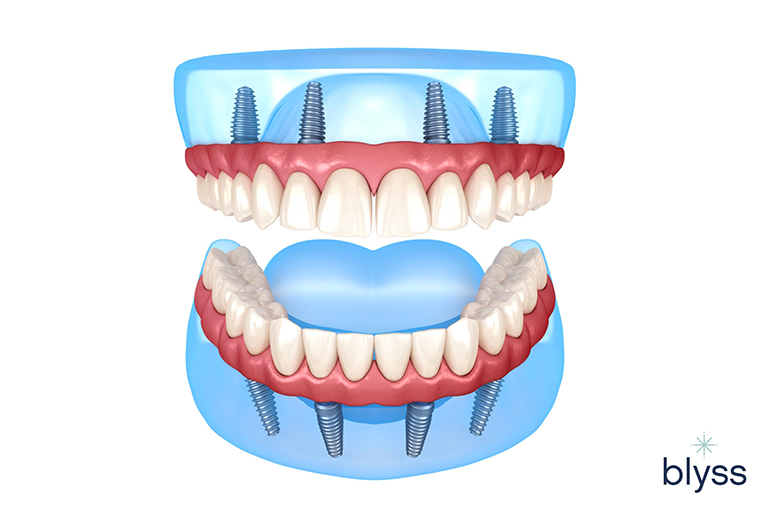Dental Sense - An Overview
Dental Sense - An Overview
Blog Article
Rumored Buzz on Dental Sense
Table of ContentsDental Sense for DummiesThe Dental Sense DiariesThe Greatest Guide To Dental SenseSome Of Dental Sense
are clinical devices operatively implanted right into the jaw to recover a person's capability to chew or their appearance. They supply assistance for synthetic (phony) teeth, such as crowns, bridges, or dentures. When a tooth is lost because of injury or condition, a person can experience difficulties such as rapid bone loss, defective speech, or adjustments to eating patterns that lead to discomfort.Dental implant systems contain a dental implant body and oral implant abutment and may additionally include a joint addiction screw. Dental implant vs bridge. The oral implant body is operatively placed in the jawbone instead of the tooth's root. The dental implant abutment is usually affixed to the dental implant body by the joint fixation screw and extends via gums right into the mouth to sustain the connected fabricated teeth
(https://linktr.ee/dentalsense1)Framework of The Dental Implant System choosing oral implants, speak to your dental provider about the possible benefits and dangers, and whether you are a prospect for the treatment. Things to think about: Your general health and wellness is a crucial consider determining whether you are a good candidate for dental implants, the length of time it will require to recover, and the length of time the dental implant might remain in location.
Smoking may impact the recovery procedure and decrease the long-term success of the implant. The recovery procedure for the dental implant body may take numerous months or longer, during which time you normally have a short-term joint in place of the tooth. the dental implant treatment: Thoroughly follow the dental health instructions offered to you by your oral company.
How Dental Sense can Save You Time, Stress, and Money.
Implant failure can result in the demand for another medical treatment to repair or replace the dental implant system. Brings back the capacity to chew Brings back aesthetic look Assists keep the jawbone from reducing due to bone loss Maintains the wellness of the surrounding bone and gums Assists maintain nearby (close-by) teeth stable Enhances lifestyle Damages to bordering natural teeth during dental implant positioning Injury to the surrounding cells during surgery, such as sinus opening Injury during surgical treatment (as an example, fracture of bordering jawbone) Insufficient feature, such as seeming like the teeth do not attack together usually A feeling that the tooth is loose or turning in position resulting from a joint screw loosening Implant body failing (looseness of the implant body) as a result of systemic infection, which might be more probable in people with unchecked diabetes mellitus due to neighborhood infection in bone and gum tissues sustaining the implant body as a result of delayed healing, which may be more probable in patients that smoke Trouble cleansing the periodontals around the dental implant, resulting in bad dental hygiene Untreated gum condition Post-surgical tingling as a result of nerve impingement or damage Constantly alert healthcare companies and imaging technicians that you have oral implants before any type of magnetic vibration imaging (MRI) or x-ray treatments.
FDA is not knowledgeable about any kind of negative occasions reported for MRI or x-ray procedures with oral implants. Oral implants systems are usually made of products that adhere to global agreement criteria of the International Organization for Standardization (ISO) or ASTM International. These criteria have information of what makes a safe product.

A dental implant is a structure that changes a missing tooth. With screw-like gadgets, the cosmetic surgeon inserts a dental implant into the jawbone, and it serves as a support for a synthetic tooth, called a crown. A tool called a joint connects the man-made tooth to the oral implant. The crown is custom-made to fit the individual's mouth and match the color of their teeth.
The Main Principles Of Dental Sense
Some individuals are not qualified for dental implant surgical procedure. It is for dental surgeons to operate individuals with: severe illnessuncontrollable metabolic diseasebone or soft cells condition or infectionIf these concerns are solved, an individual can have the surgery. In, oral doctors avoid running on individuals with: If individuals with any of the above undertake oral implant surgery, there is a higher danger of the implant stopping working.

Dental dental implant surgical treatment is a tailored procedure. It's not the same for every person. But the complying with offers a basic introduction of what you can expect your dentist, dental cosmetic surgeon, periodontist or prosthodontist to do: Position the dental implant operatively. Give you time to recover. Connect the article and last crown, bridge or denture.
Next, your specialist will meticulously put the dental implant into your jaw. If your dental implant is near the front of your mouth, your dental expert will certainly make a short-term tooth for you to use until you recover.
The Facts About Dental Sense Revealed
Throughout the healing phase, your jawbone must fuse to the dental implant. This process can take anywhere from three to nine months.
When your dental implant heals, your dental expert can attach the abutment (little adapter post) and your final remediation (crown, bridge or denture). This generally takes concerning one hour to complete and might need a 2nd minor surgery. You should not really feel any type of pain throughout your dental implant treatment because your provider will make use of medication to numb your periodontals.
Report this page